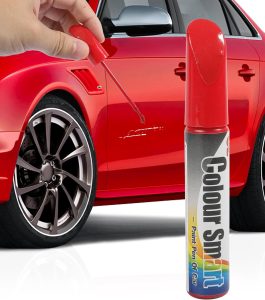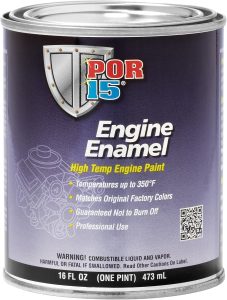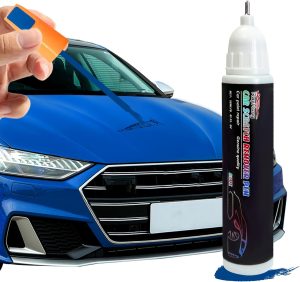Painting a car is a meticulous and rewarding process that requires attention to detail, patience, and, most importantly, the right conditions. While many factors can affect the outcome of your car’s paint job, one of the most crucial is the temperature at which you’re working. Whether you’re planning to tackle a DIY car paint project or are heading to a professional auto body shop, understanding the ideal temperature for painting your car will help ensure a smooth, long-lasting finish.
We’ll explore why temperature matters when painting a car, the best temperature ranges for car painting, and some essential tips for optimizing the painting process.
Why Temperature Matters When Painting a Car
Temperature plays a significant role in the application and curing of paint. Too cold or too hot, and you risk compromising the final result. Here’s why temperature matters:
- Paint Consistency: Paint behaves differently at various temperatures. In cold temperatures, paint may become too thick, making it difficult to apply evenly. In hot temperatures, the paint may dry too quickly, leading to rough or uneven surfaces.
- Curing Time: The curing process, where the paint hardens and bonds to the surface, is influenced by temperature. If the temperature is too low, the paint may take longer to cure, resulting in longer wait times before the car can be handled or exposed to the elements. On the other hand, too much heat can cause the paint to cure too fast, which could lead to poor adhesion.
- Application Control: Paint sprayed in the wrong temperature can lead to issues like runs, sags, and orange peel (a texture that resembles the skin of an orange). Ensuring the right temperature helps you control the spray and get a flawless finish.
The Best Temperature Range for Painting a Car
To achieve the best possible results, the temperature during the painting process should be within a specific range. The ideal conditions vary slightly depending on the type of paint used, but here are the general guidelines:
1. Ideal Temperature Range: 65°F to 85°F (18°C to 29°C)

This temperature range is widely regarded as optimal for painting a car. Here’s why:
- Paint Flow: At temperatures between 65°F and 85°F, paint flows smoothly and consistently, providing an even coat that will dry properly. Paint is not too thick or too runny, making it easier to control the application.
- Curing Time: In this range, the paint will cure at a reasonable pace, allowing for proper bonding to the surface without rushing or slowing down the process.
- Avoids Extremes: Temperatures outside of this range can cause issues. Too much heat can cause the paint to dry too quickly, while too much cold can prevent the paint from curing properly.
2. Temperatures Below 50°F (10°C) – Risks and Challenges

When the temperature drops below 50°F (10°C), painting becomes more difficult and less effective. Here’s why:
- Paint Viscosity: When the air is too cold, paint tends to become thicker and harder to spray. This can lead to uneven coverage and difficulty achieving a smooth, glossy finish.
- Longer Drying Time: Cold temperatures can significantly slow down the drying and curing process, making it difficult to get the layers of paint to bond correctly. You may end up with an inconsistent finish or issues with adhesion.
- Increased Risk of Runs: Cold temperatures can affect how the paint behaves during the application, increasing the likelihood of runs and drips, which are difficult to correct later on.
- Increased Humidity: Cold weather often comes with higher humidity, which can cause moisture to get trapped in the paint, leading to defects like bubbles, blisters, or poor adhesion.
Tip: If you’re working in colder temperatures, you can use a paint booth with controlled heating or a space heater in your garage. However, it’s still best to avoid painting in temperatures below 50°F if possible.
3. Temperatures Above 90°F (32°C) – Risks and Challenges

Hotter temperatures can cause several problems with your paint job as well:
- Faster Drying Time: When the temperature is above 90°F, the paint dries too quickly, which may prevent you from getting a smooth finish. Rapid drying can result in dry spray, where the paint particles don’t properly adhere to the surface and end up creating a rough, uneven texture.
- Poor Adhesion: Hot temperatures can lead to the paint curing before it has time to properly bond to the car’s surface. This can result in a weak paint job that’s more prone to chipping or peeling.
- Increased Risk of Orange Peel: Hot conditions can lead to the paint drying too fast before it has a chance to level out, causing an orange peel texture. This occurs when the paint’s surface doesn’t smooth out completely after spraying.
- Fumes and Overexposure: Paint fumes are more potent in hot weather, which can be harmful to your health. Always ensure good ventilation, but in extremely hot conditions, you should work with extra caution.
Tip: If you’re working in hot weather, it’s best to paint during the cooler parts of the day (early morning or late evening) to avoid excessive heat. You can also use paint retarders to slow the drying process.
Other Factors to Consider for a Successful Paint Job
While temperature is important, there are several other factors that will affect the quality of your car’s paint job:
- Humidity: Humidity levels should also be taken into account. High humidity can introduce moisture into the paint, which can cause issues like bubbles, streaking, or poor adhesion. The ideal humidity level for painting is between 40% and 60%.
- Surface Preparation: No matter how good the temperature conditions are, if your car’s surface isn’t properly prepared, you will run into issues. Clean the surface thoroughly, remove any rust or old paint, and ensure the car is free of dust and debris before you start painting.
- Wind: Strong winds can blow dust and debris onto your car’s freshly painted surface, compromising the finish. If possible, paint indoors or in a controlled environment to minimize exposure to wind and contaminants.
- Paint Type: Different types of paint, such as acrylic enamel, urethane, or lacquer, may require slightly different conditions. Always check the manufacturer’s instructions for specific temperature and humidity guidelines for the paint you’re using.
Tips for Painting Your Car in Extreme Temperatures
If you absolutely have to paint in extreme conditions, there are ways to mitigate some of the challenges:
- Use a Paint Booth: If possible, paint your car in a controlled environment like a paint booth, where the temperature and humidity can be regulated.
- Use Heat Lamps or Space Heaters: In cold weather, you can use heat lamps or space heaters to raise the temperature of the environment and accelerate the drying process.
- Use Paint Additives: Certain additives like paint retarders or slow-drying agents can help you manage faster drying times in hot weather.
- Work in Sections: In extremely hot weather, it can help to work in smaller sections at a time to ensure the paint doesn’t dry too quickly before you’re finished applying it.
Conclusion
In summary, the best temperature to paint a car is between 65°F and 85°F (18°C to 29°C). This range ensures optimal paint flow, curing time, and finish quality. Temperatures below 50°F (10°C) or above 90°F (32°C) can lead to various issues such as uneven application, poor adhesion, or excessive drying times. By painting in ideal conditions and taking other factors like humidity and wind into account, you can achieve a flawless, long-lasting paint job that will keep your car looking sharp for years to come.
When in doubt, always check the specific recommendations from the paint manufacturer, as different products may have their own unique requirements.


Leave a Reply